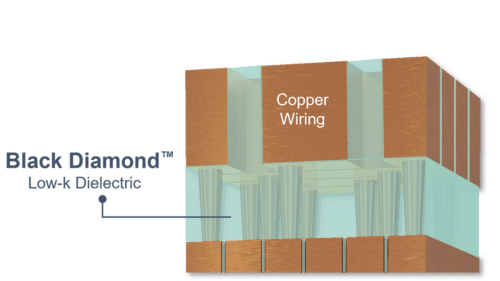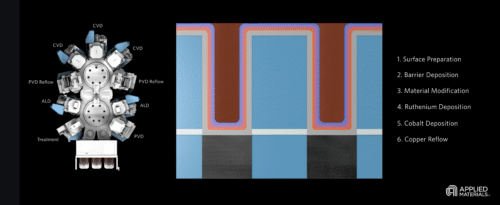The industry’s first high-volume use of ruthenium scales copper chip wiring to 2nm and beyond, reducing resistance by 25% and new low-k dielectric material lowers chip capacitance and enhances logic and DRAM chips for 3D stacking.

Modern logic chips, containing billions of transistors connected by extensive copper wiring, face challenges as they scale down to 2nm. Thinner dielectric materials weaken the chips mechanically, and narrower copper wires increase electrical resistance, affecting performance and power efficiency.

Applied Materials, Inc. has unveiled materials engineering solutions aimed at enhancing the performance-per-watt of computer systems by facilitating the scalability of copper wiring to the 2nm logic node and beyond. Using equipment like the Producer Black Diamond PECVD and the Endura Copper Barrier Seed IMS with Volta Ruthenium CVD, the team has developed new materials and processes to overcome the limitations of traditional scaling methods. The team’s enhanced low-k dielectric, Black Diamond, addresses these issues by reducing the minimum k-value and increasing mechanical strength, facilitating 3D stacking and improved chip performance.
Innovations in Chip Wiring Technology
The team introduced a new binary metal liner, a combination of ruthenium and cobalt (RuCo), enabling ultrathin copper wires. This innovation reduces liner thickness by 33% to 2nm, enhances surface properties for void-free copper reflow, and decreases electrical line resistance by up to 25%. The new integrated materials solution combines six technologies in one high-vacuum system, offering a significant advancement in chip wiring capabilities.
These advancements are crucial for developing energy-efficient computing systems, particularly in the AI era. Future research will focus on further enhancing these technologies and exploring new materials to continue pushing the boundaries of chip performance and power efficiency. The company’s ongoing efforts are set to shape the future of semiconductor technology, providing substantial benefits for various applications in computing and beyond.






